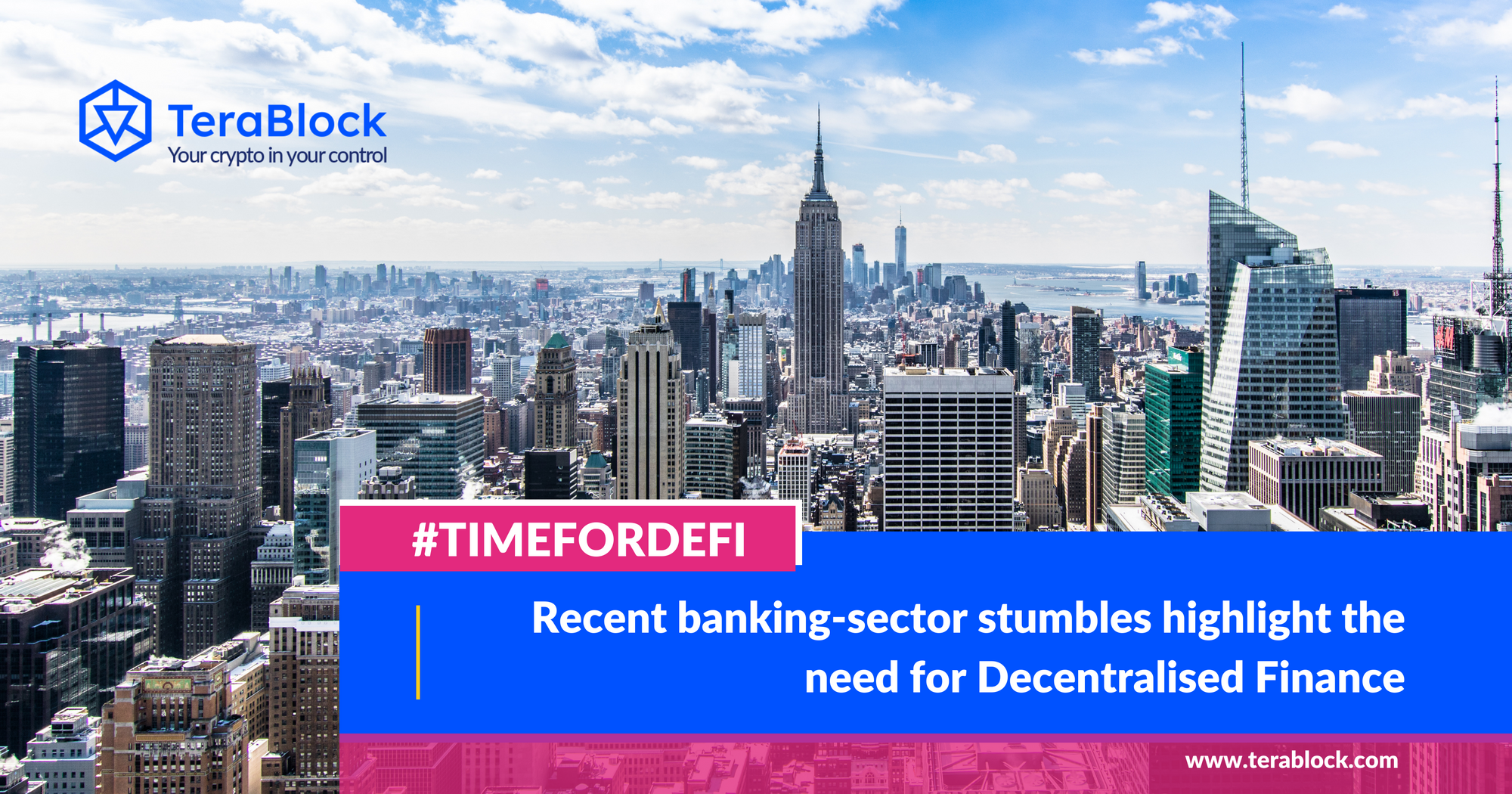Many financial experts see the present banking crisis as an indication of a deeper deterioration within the system, thereby adding more legitimacy to the concept of decentralised finance.
The recent wave of bank closures across the US has brought attention to the vulnerability of the traditional banking system, leading some crypto experts to actively advocate for decentralised financial infrastructure as a more secure and reliable alternative to the traditional finance infrastructure.
The primary factors contributing to the recent failures were monetary and prudential policy decisions that impacted liquidity and market structure. The knock-on effects of the banking crisis are expected to have more of an impact on centralised institutions than on decentralised protocols.
Key Takeaways
Whereas a majority of experts weigh in on the future of decentralisation, many analysts are blaming digital assets as the catalyst for the failure of Signature, Silvergate and Silicon Valley Bank, leading to a blame game amongst regulators, crypto enthusiasts, and market participants. It is true that some of the closed banks had significant connections to digital assets. However, it is believed by experts such as Alessio Quaglini, the CEO of Hex Trust, that the failure of the overall banking system is a natural outcome of the rigidities of the current financial apparatus which is extremely change-adverse in nature. Speaking about the hostility toward crypto, he mentions that "Compared to traditional finance, counterparty risk is far more transparent with decentralised finance, and it’s events like these that make investors realise there is an alternative."
Benefits of Decentralisation
Decentralisation is a fundamental aspect of crypto finance that provides several key benefits.
- Decentralisation mainly proposes that there is no central authority or single point of control that can manipulate or censor transactions. In its ideal form, decentralisation is meant to create a more resilient defence against attacks while making it less vulnerable to corruption.
- Another advantage of decentralisation is that it allows for greater privacy and security. Since there is no central database of user information or transaction history, it becomes more difficult for malicious actors to gain access to sensitive information.
- Decentralisation also promotes innovation and competition by allowing for a level playing field where anyone can participate and contribute to the development of the system.
In order to fully realise the benefits of decentralisation, appropriate infrastructure is essential. This includes secure and reliable networks, decentralised storage and computing resources, and user-friendly interfaces that enable people to interact with the system easily and safely. Setting up appropriate infrastructure helps to ensure that the system is secure, efficient, and accessible to everyone, fostering trust and confidence in the system, which is crucial for widespread adoption and acceptance.
Is the Traditional System of Finance Crumbling?
Hamilton Keats, the CEO of Crypto Treasury Management, Krayon views the recent banking crisis as a sign that the traditional financial system is crumbling. He points to the Federal Reserve’s decision to raise rates too quickly in an attempt to combat inflation as a key factor contributing to the crisis. Conversely, blockchain-based payment infrastructure and decentralised monetary systems have been working effectively to build investor confidence, abstracting away from the manual interventions of the existing banking systems and providing risk visibility.
Keats suggests that the Federal Reserve's decision to increase interest rates too quickly, in an attempt to tackle inflation, played a significant role in causing the crisis.
The Decentralisation Imperative: Why It's Time to Move Beyond the Status Quo
The growing stability in blockchain-based payment infrastructure has proved beyond doubt that decentralised monetary systems have been successful in building investor confidence. These systems remove the need for manual intervention by existing banking systems and provide greater visibility of risk.
Whereas the dust from the current banking crisis may soon settle, the crisis may have more sustained outcomes. The growing misfortunes in legacy banking are catalysing the shift towards the crypto asset ecosystem in the long term. Whereas it is difficult to predict exactly how long this shift may take, it is now safe to say that on-chain transparency in the crypto asset ecosystem brings trust, which is lacking in the current banking system.





